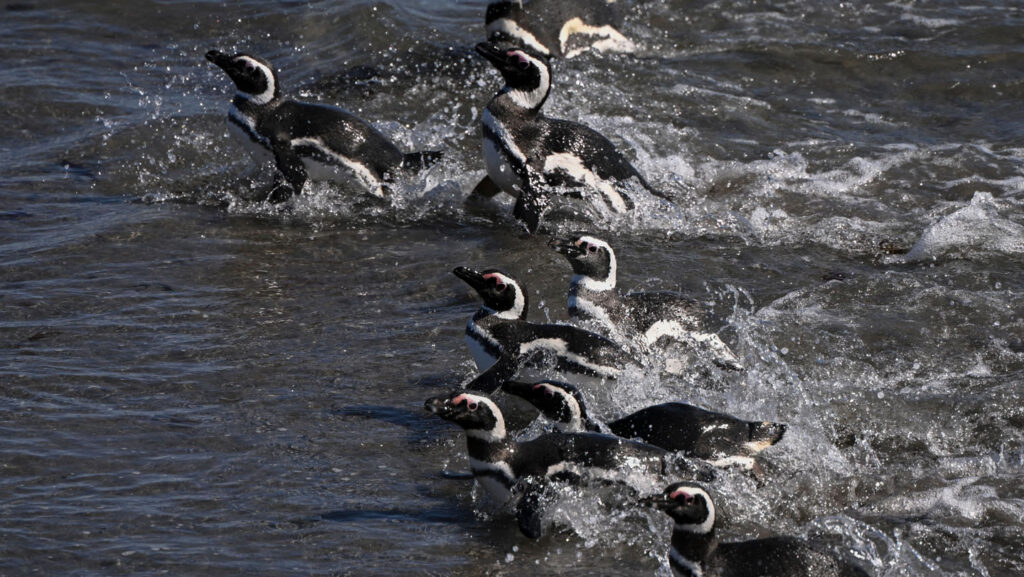Sometimes, the best thing for a penguin is to go with the flow.
Magellanic penguins change their strategy for navigating home based on the strength of ocean currents, researchers report July 17 in PLOS Biology. In calm waters, penguins head almost straight back to their colony after fishing trips. But in strong currents, they follow the flow — increasing travel distance, but conserving energy.
From September to February, Magellanic penguins (Spheniscus magellanicus) live in South America, breeding in colonies along the coasts of Chile and Argentina. Adult penguins will travel over 100 kilometers in a single trip to find small fish, squid and shellfish to feed their chicks.
“They jump in the sea, they swim out a long way, they grab a hold of the fish, and then they swim back, and then they give the food they catch to the chicks,” says study coauthor Rory Wilson, a biologist at Swansea University in Wales.
Long ocean journeys require not only a great sense of direction but also the ability to expertly negotiate ocean currents, says David Grémillet, a biologist at the French National Centre for Scientific Research in Montpellier. Sea turtles, for example, use currents to propel themselves on long migrations. Think Crush in Finding Nemo. But currents can also sweep animals, including penguins, off their intended course.
While penguins are perfectly capable of swimming against strong currents, Wilson says that it’s not necessarily the best strategy. “Why would you catch all that fish and then spend all the energy just swimming against the tide?”
To figure out if these penguins had a better strategy, Wilson and colleagues used GPS devices and movement loggers to track the hunting trips of 27 adult penguins from the San Lorenzo colony, in the Valdés Peninsula of Argentina, under different current conditions.
Some adult penguins swam for nearly 30 hours in search of food before starting their long journey home. Their return trips, which could last up to 16 hours, always started off with the animals pointing straight toward their colonies. But what they did next depended on how the ocean was looking that day.
In calm waters, the penguins swam in an almost straight line back to their colony. But on days with strong currents, the penguins’ homeward journeys followed a different path.
“[The penguins] were not into really hard work and stupid tactics,” Wilson says.
Instead, they swam in s-shaped trajectories that followed the peninsula’s natural tide pattern. Because the tide reversed direction during their long journeys, the animals didn’t drift too far off course. The longer trips provided extra fishing opportunities and saved energy, according to calculations of the effort needed to swim at a given speed.
This suggests that these penguins assess the current’s strength and direction to choose the best navigation strategy, Grémillet says.
Penguins probably know when to go with the flow through a combination of instinct and experience. “They have these genetically determined, rough user manuals of the sea,” Grémillet says. But young penguins also continuously observe the adults and learn from their behavior.
It’s unclear how the penguins sense the strength of ocean currents, Wilson says. Humans and other animals sense currents based on which direction the water drags them relative to visual landmarks, like a mountain or a lighthouse. But in the open ocean, where most of these penguins’ journeys take place, there aren’t many landmarks to use.
How animals sense the direction and strength of ocean currents is “one of the big mysteries of animal navigation,” Grémillet says.
Read the full article here


